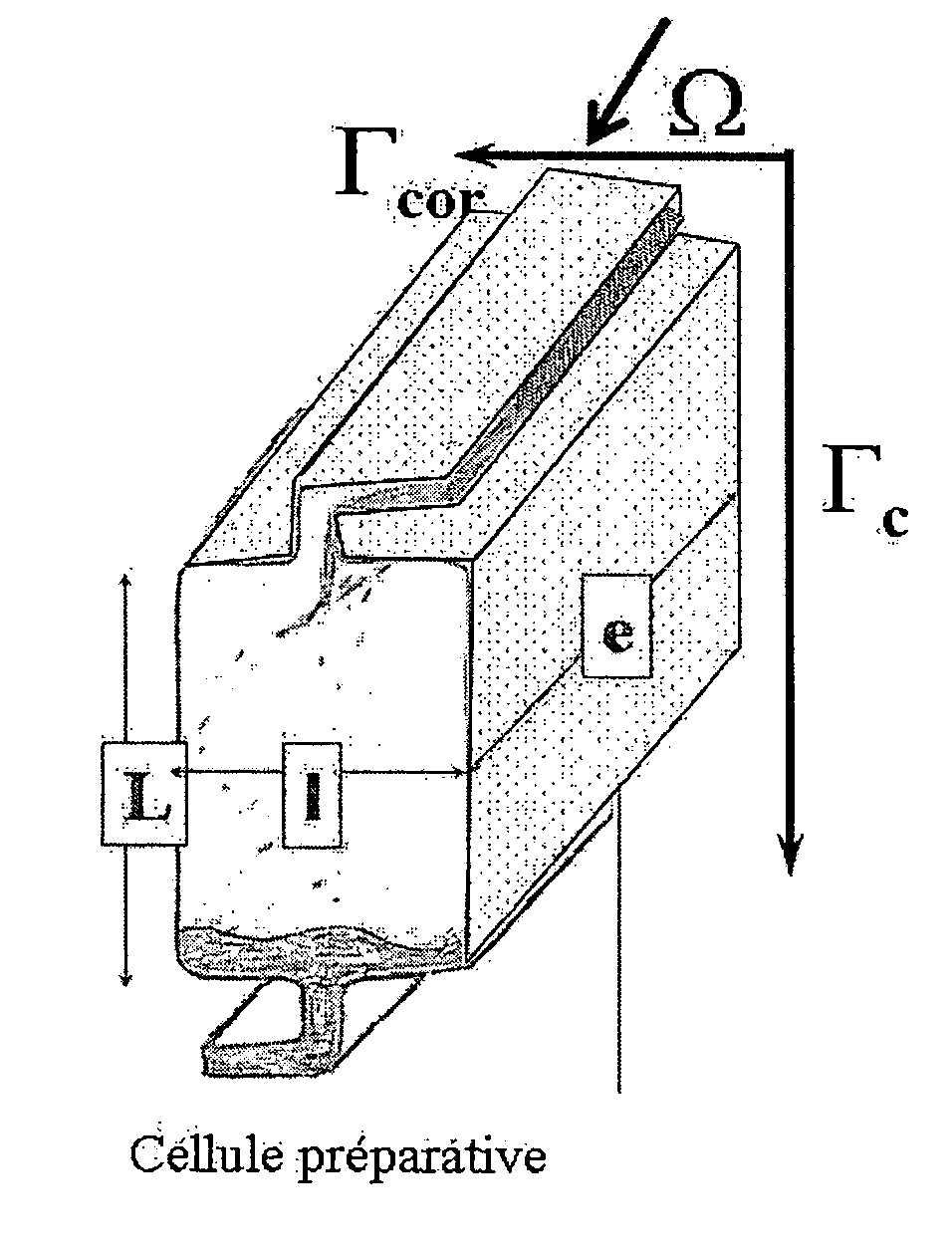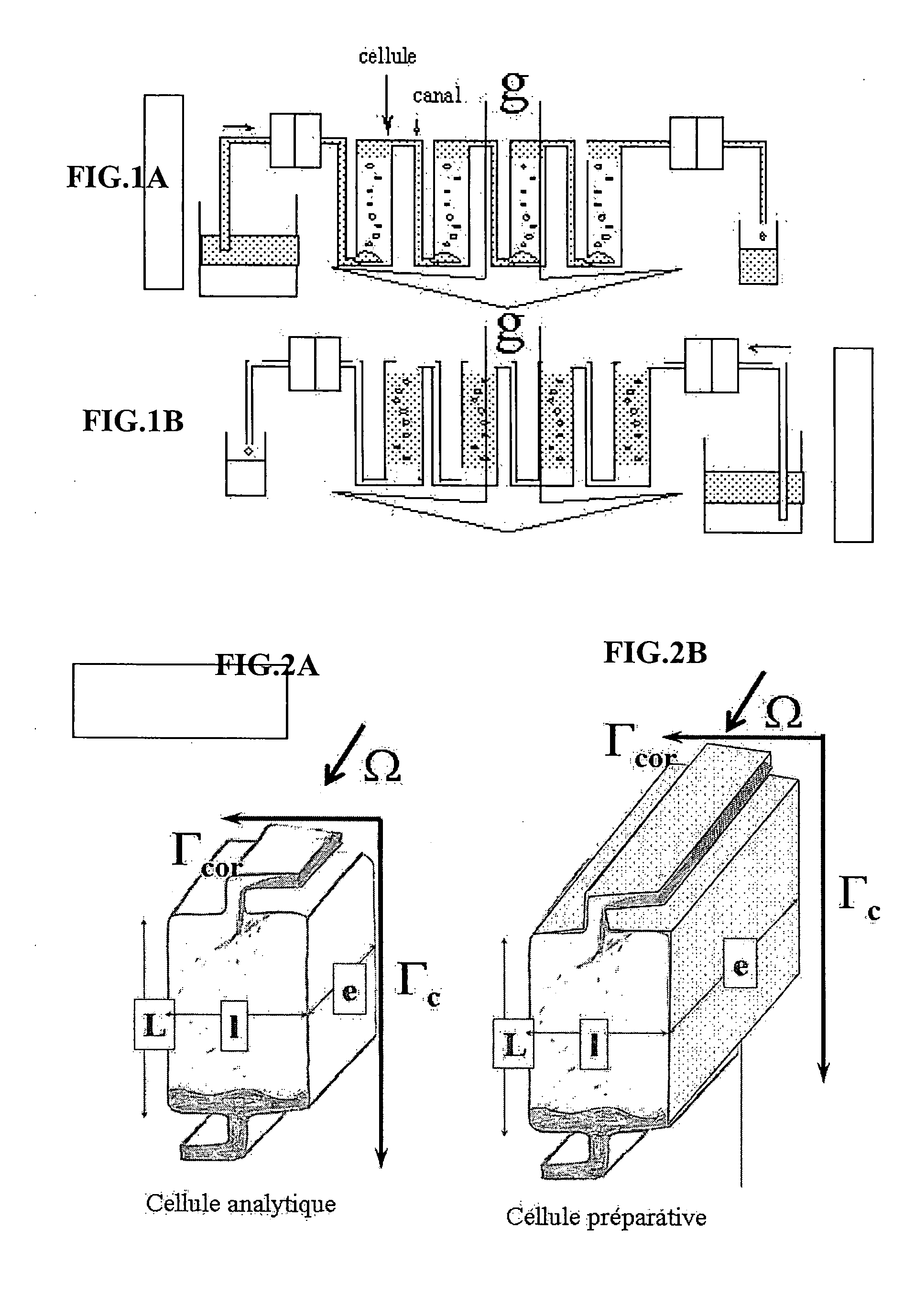Method for Optimally Sizing Cells of a Centrifugal Partition Chromatography Device
- Summary
- Abstract
- Description
- Claims
- Application Information
AI Technical Summary
Benefits of technology
Problems solved by technology
Method used
Image
Examples
Embodiment Construction
[0019] It has been confirmed that a mobile phase film fed into the top of a cell has a trajectory and a behaviour that are closely linked with the three dimensions L, I and e. The orientation (FIG. 2) of the Coriolis acceleration vector Γcor, which is of great significance for the evolution of the flow regimes in the cells, fundamentally differentiates dimensions I and e since it is oriented in the direction of I and not at all in the direction of e.
[0020] Study results show that, considering the locations of the inlets linking each cell to the channels that connect it to the next and following cells, a variation of the three quantities L, I and e has a very different repercussion on the hydrodynamic characteristics of the flow in the cell.
[0021] The nature of the flows (spray or oscillating film type) is very greatly correlated with the linear velocity of inflow, Ve, of the mobile phase in the cell, which is proportional to the cube root of the volume flow rate / thickness e rati...
PUM
 Login to View More
Login to View More Abstract
Description
Claims
Application Information
 Login to View More
Login to View More - R&D
- Intellectual Property
- Life Sciences
- Materials
- Tech Scout
- Unparalleled Data Quality
- Higher Quality Content
- 60% Fewer Hallucinations
Browse by: Latest US Patents, China's latest patents, Technical Efficacy Thesaurus, Application Domain, Technology Topic, Popular Technical Reports.
© 2025 PatSnap. All rights reserved.Legal|Privacy policy|Modern Slavery Act Transparency Statement|Sitemap|About US| Contact US: help@patsnap.com



